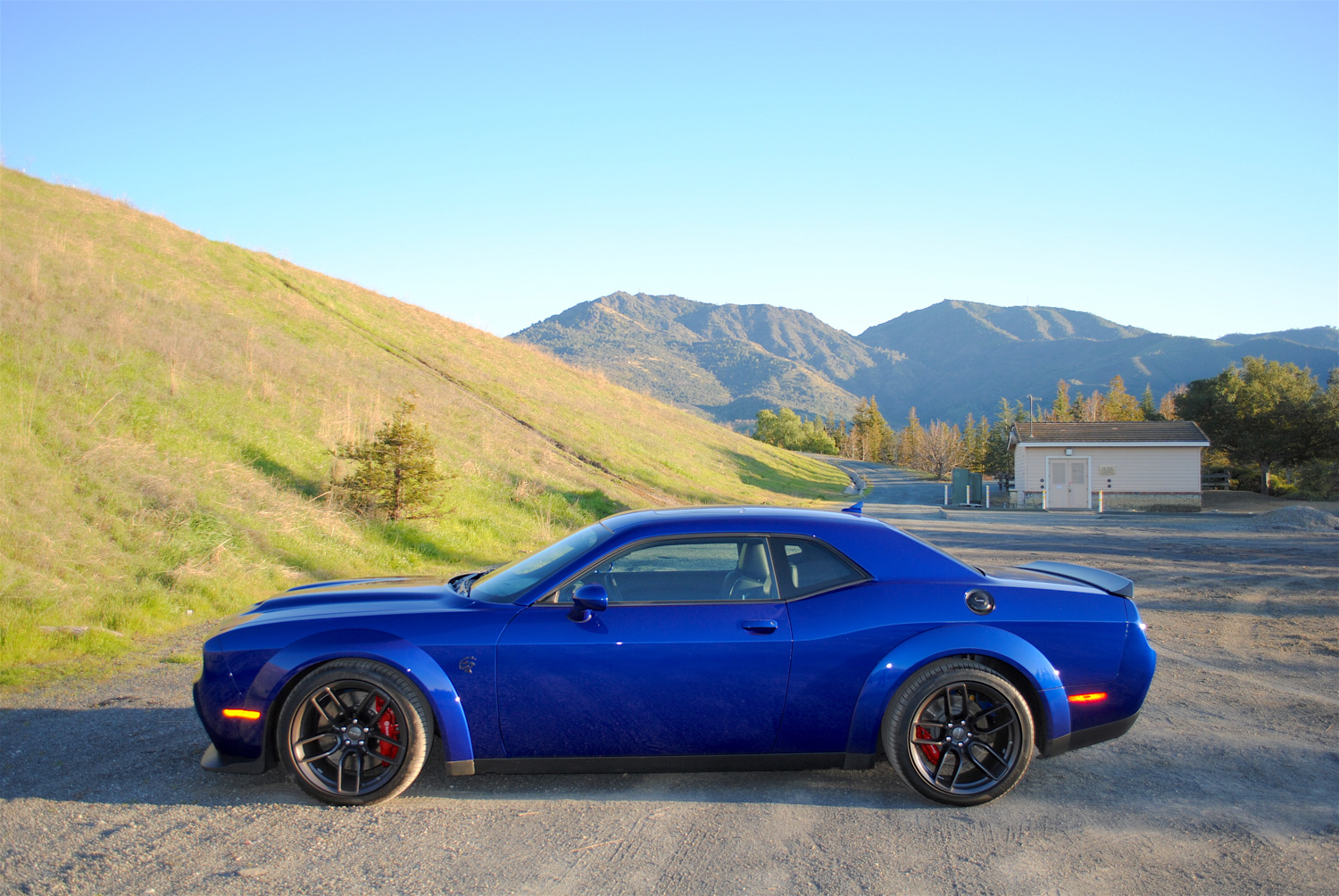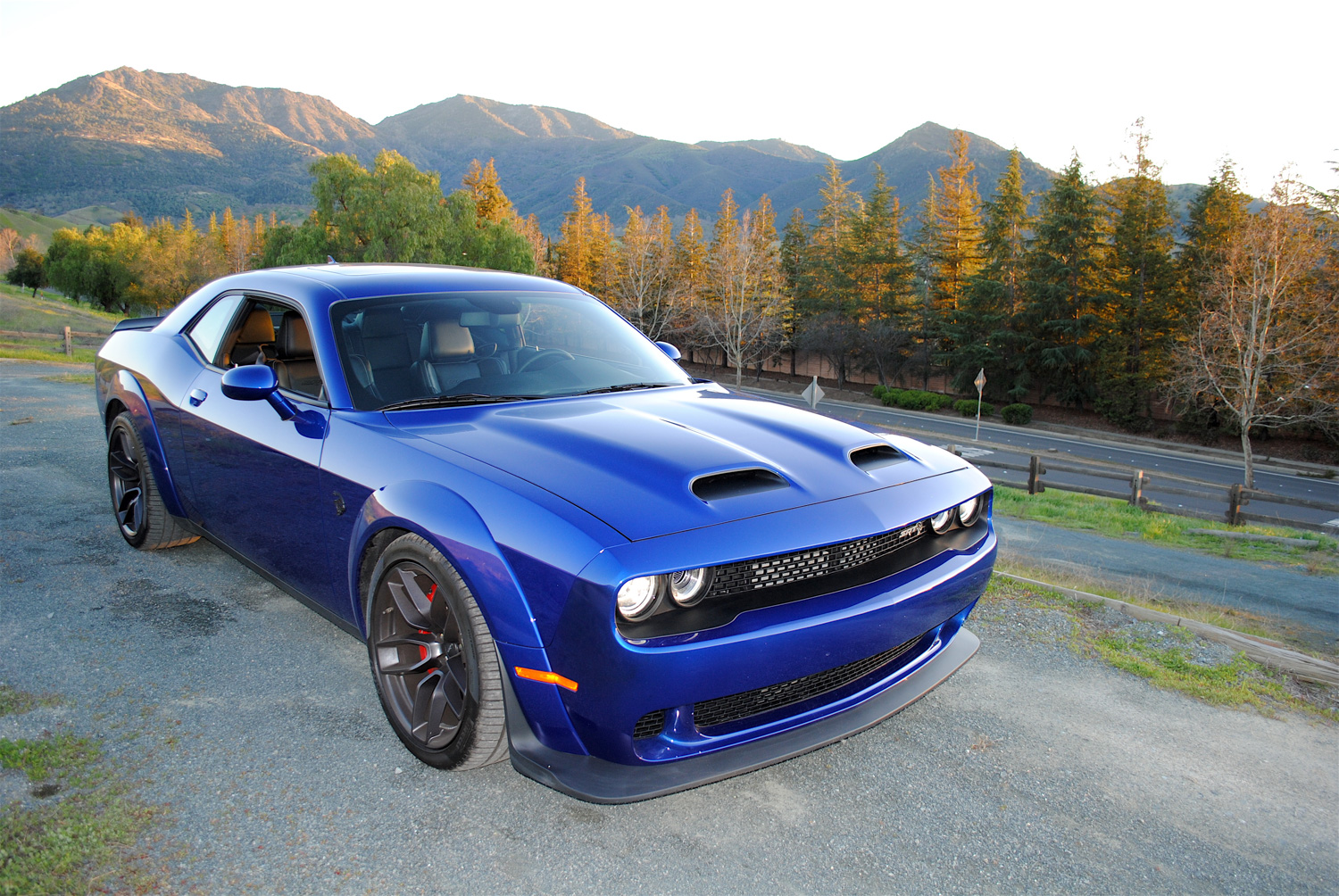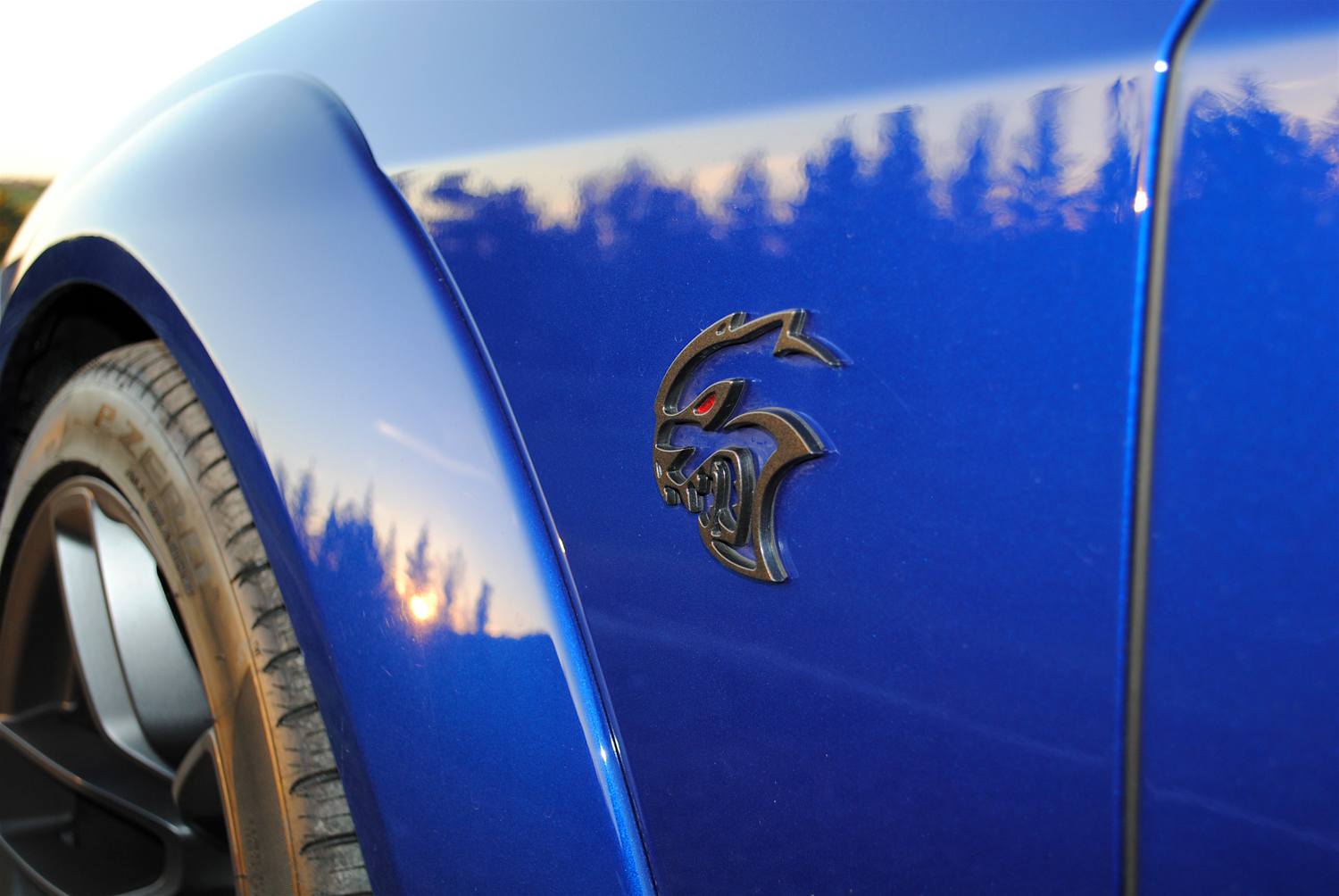2019 Redeye VS 2018 Demon: A Driver’s Perspective
I never thought I’d say this, but cars (and certain car people) are really starting to get to me. I’m not talking about the real enthusiasts, but more about those who hide behind closed doors and spit out anonymous opinions on subjects with which they have little to no experience. I’m saying this because the following article on two similar vehicles is going to cause people to whine and moan for no other reason than they feel that it’s their prerogative.
As for today’s cars, they, too, are starting to rub me the wrong way due to the mass amounts of superfluous technology that manufacturers are installing. As a driver, I don’t want a car that parks itself, yells at me when I’m going too fast, or wrenches the wheel out of my hand if I clip the apex of a corner. Instead, I want one that lets me have fun and enjoy driving for its own sake. Don’t get me wrong, safety features are lovely, it’s just this new generation of vehicles trains people to steer, not drive, and this I have a problem with.
I’m going to assume that, like me, you consider yourselves drivers, and as such, your cars still represent freedom, power, style, and passion. It’s why we love the hobby, and it’s why at day’s end, we gravitate to specific makes and models.
That brings us to two seemingly very similar cars that were built for rather different purposes—the 2018 Dodge Demon and the 2019 Dodge Redeye. They’re both big, raw, and in my opinion, not for beginners. Think of them as a liter bike versus a 50-cc scooter. I’ve logged thousands of miles in these two vehicles both on race tracks and public roads, so when it comes to how they drive, I’m well-versed.




When released in 2008, the Dodge Challenger shared many of its underpinnings with the W210-chassis E-Class Mercedes-Benz that was built between 1996–2002. And while today, in 2019, there are still a few bits and bobs left from that original platform, let me assure you that like Porsche’s 911, the Dodge Challenger has evolved into what is perhaps the last real American grand touring car.
At heart, I’m somewhat of a Mopar guy, as I own a few classic B-bodies as well as an old Jeep. My latest acquisition, however, happened early in 2018 when The House Of Muscle, a show I host on YouTube, went out and purchased a new Dodge Demon. For me, it was the perfect complement to the types of vehicles the show highlights, and if I’m completely honest, it’s arguably one of, if not, the greatest muscle car ever created. (Hater flame suit on.)
Out of the gate, we’re talking about a 6.2-liter supercharged Hemi V-8 that, on 100-octane fuel, pushes out 840 hp and 770 lb-ft of torque (808 hp and 717 lb-ft on 91 octane). Its quickest quarter-mile run in stock form is 9.65 seconds at 140 mph on a fully-prepped drag strip with a professional driver behind the wheel, along with the powertrain control module (PCM) and skinny front tires that come as part of the $1 Demon Crate. Thus far, my personal best has been 10.40 at 132 mph—a time that I’m thrilled with. Plus, just knowing the car will run in the nine-second range makes me smile and gives me a goal each time I hit the strip.
Engine aside, there were a lot of production firsts in the Demon’s arsenal. A TransBrake, 315-series DOT drag slicks at all four corners, a drag-tuned suspension, skinnies on the front, and the aforementioned PCM that’s used for race fuel all broke the mold for a production car. Hell, get everything just right, and the Demon will even pull a wheelie.

The new Hellcat Redeye, on the other hand, is not a drag car (although still blisteringly fast) and instead functions as a more powerful successor to the 707-hp Dodge Hellcat that was released in 2015. Under the hood is the exact same 6.2-liter supercharged Hemi V-8 as the Demon; however, instead of pumping out 840 hp with a special PCM, it gets by with a paltry 797 bhp and 707 lb-ft of torque. It’ll still run the quarter-mile in 10.8 seconds, hit 60 mph in just 3.4 seconds, and top out at 203 mph. The difference between the two is that the Redeye is entirely road-course capable, where the Demon is not. Though the two cars look almost identical aside from a few visual cues, it’s the driving experience that sets them apart.
We’ll start with the Demon.
You know the old adage that muscle cars are only good in a straight line? Well, the Demon falls into that category. Initial reports said it would pull 0.97 g on the skidpad, and it will, but that’s with the 315/40-series DOT drag slicks on the stock 18-inch wheels. I doubt, however, that, once warm, that number would be sustainable. Fact is, the Demon suspension is super soft. In Street Mode and on the highway, the ride is not unlike that of a 1960s muscle car or a late ‘70s Cadillac. Bumps and road whoops mean the Demon floats along with the nose porpoising up and down like an old-school cruiser. It’s fun and comfortable with a ride that will bring you back to the days of yore (if you’re old enough). One must also understand that there’s no shame in this, as it’s precisely the way the Demon was engineered to behave. Most owners love it.
Switch to Sport mode and the ride firms up. However, at its core, the Demon is a straight-line machine that if pushed will wallow through corners like an elephant on stilts. On our car, we even installed the road wheels from Mopar to improve handling, but honestly, it handled better with its original 18-inch setup. Demon owners: take note.
The traction control system, brakes, and transmissions compared to the Redeye are quite different. In regards to grip, the Demon will simply blaze the tires at will (unless on a prepped surface), and this is with the system on kill and while running the drag radials. Opt for the road wheels and Pirelli tires, and you might as well put two plastic lunch trays back there, because you’ll burn them up as soon as you put your foot down. It’s hilarious and fun, but it gets expensive quickly.



Drag Mode means traction control has been deactivated and the car now thinks you’re racing. Thus, in Demon-speak, it thinks you’ve already done a burnout in the box and that you’re sitting on a prepped surface with drag slicks waiting for the tree to change colors. If this isn’t the case, DON’T BE IN DRAG MODE! I know this because when I first started to feel it out, I jumped on the pedal at around 65 mph and the back end stepped right out—at 65 mph! Was it controllable? Yes, and believe it or not, fun, but I’ve done this before in other high-powered automobiles, so I was somewhat prepared. For those who don’t drive for a living, a car stepping out at that speed could definitely result in a brown pants experience, so be mindful.
Now we get to the Demon’s brakes, and while they’re decent, they’re not as good as those on the Redeye. That said, you have to put them in context for how and what the Demon was designed to do: drag race. The size of the rotors and calipers had to be reduced to accommodate the narrow 18-inch drag wheels up front. Therefore, instead of the supersized 15.4-inch rotors and six-piston Brembo calipers found under the 20-inch wheels on the Redeye (and subsequent Hellcats), the Demon instead relies on a lighter 14.2-inch rotor and four-piston Brembo caliper.
Logically, it makes perfect sense. The Demon needed to be optimized for weight savings and to stop efficiently after running the quarter-mile of 9.65 at 140 mph. Plus, as the stock factory PCM limits top speed to 168 mph, that, combined with the grip of the drag radials, means this combo works out perfectly (testing showed a 60-0 mph distance of 97 feet). By comparison, the higher top speeds (199-204 mph) in the Redeye (and standard Hellcats) necessitates bigger brakes. Remember, too, that the Redeye was designed for use on a road course, which means it can be subjected to repeated hard stops, corner, after corner, after corner. Under real-world conditions and in panic stop situations (of which I’ve been in a few), there’s no question that the larger brakes on the Redeye provided more confidence-inspiring initial bite as well as better on-road and overall performance-based stopping power.
The Redeye and Demon both use the same TorqueFlite 8HP90 eight-speed automatic transmission, but with different calibrations. On the street and under normal driving conditions, they feel almost identical. Put them in their kill settings, though—Track Mode for the Redeye and Drag Mode for the Demon—and things change. With the Demon, the shifts come hard and fast with the transmission being calibrated to get the most from a 1320 run and its drag-calibrated suspension. Crossing the line at speed means you’ve blitzed through six of its eight gears, and coming off the throttle is met with smooth downshifts and zero in the way of drama.

The Redeye goes the other direction when placed in Track Mode. The shifts, while firm, have been optimized for continuous on/off hard throttle applications. Come in hot to a corner, and the transmission blips downshifts and then rewards with a satisfying “braaap” as it upshifts to the next gear when you hit the throttle. What’s even more impressive is that this gearbox is playing with upwards of 800 hp and handles its business without a care in the world. It stays cool, and whether you use the steering wheel-mounted paddles or just leave it in full auto mode, it does nothing but impress. This is indeed one of the best transmissions currently in a production automobile.
Where the Demon behaves like an actual ‘60s muscle car, the Redeye is the opposite. Yes, it’s big and heavy with the dimensions of an old Wagoneer, but dressed in widebody trim with a squared 305-series stance, this thing is perhaps the last performance muscle car on the market. Now, before you bring up the Mustang and Camaro, know this—they’re more sports car than muscle car now, with both OEMs touting their on-track capabilities over their drag and on-road manners. Are they good? Sure—just don’t go thinking of them as traditional hot rods because that ship has sailed.
The Redeye is instead a GT car with honed performance capabilities, and while it’s not a drag or track car, it’s capable at both. On a track it’s a riot, offering extreme speed, great suspension and brakes, and gobs of power. Just don’t go thinking you’ll be catching a ZL1 Camaro or GT350 Mustang ‘cause that isn’t happening. Instead, you need to embrace the mass, embrace the power, and then sit back and giggle every time you hit the accelerator. Understand what the car was designed to do, drive it in that manner, and you’ll be the happiest person on Earth. Go in thinking its something it’s not and prepare for disappointment—it’s that simple. Oh, and did I mention both cars get around 22 mpg on the highway? I find that fantastic for 800-hp machines.
Road trips fit the Redeye better as well, thanks to more interior sound insulation, enhanced features such as blind spot monitoring and adaptive cruise control, and a suspension that’s better suited to long-distance grand touring. An optional 2.62 rear gear, as opposed to the 3.09 that’s found in the Demon, is available, as well.



Interior-wise, the two cars are exactly the same. They come with the same comfy seats, stereo, and the rear-seat delete option if you so choose. The differences are the Demon logo versus the Hellcat logo on the front seats, the addition of the passenger HVAC vent that designates the last four digits of the Demon’s VIN, and the Demon logo on the center startup screen and in the SRT Performance Pages. Otherwise, that’s it.
The exterior and engine bay have a few more differences, starting with the 18-inch Demon-specific wheels and that large single-port hood scoop (as opposed to the dual snorkel setup on the Redeye). There’s also a Demon logo on the front quarter panels, the four- as opposed to six-piston calipers under the front wheels, illuminated Demon logos in the air-intake headlamps, and my personal favorite, a graphic of a 1970 Challenger in the lower driver’s side corner of the windshield. Look closely, and you’ll notice the Demon has smoke coming off the rear tires where the Redeye does not—cool, right? Under the hood, there are a few differences that have little to do with performance (remember, the same engine). They consist of the Han Solo-esque Demon badge on the blower, red (as opposed to black) valve covers on the Demon, and the Demon Air Grabber logo at the base of the hood.
At day’s end, you’ve got to figure out what you really want. If you’re a drag racer and have a second car, then buy a Demon, as nothing is better—period. If you’re looking for a 200-mph daily driver that’s unbelievably comfortable and that will deliver smiles every time you get into it for under $80,000, the Redeye is the one for you. Either way, you can’t lose.









